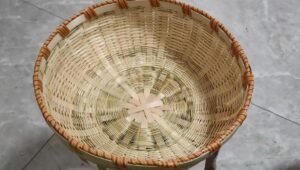Bamboo handicrafts have become increasingly popular in recent years, thanks to their unique beauty, sustainability, and cultural significance. Originating from centuries-old traditions in various countries, bamboo products vary in style and function. Craftspeople have sophisticated techniques to transform bamboo into stunning works of art and practical items. Today, the demand for eco-friendly products continues to rise, making bamboo handicrafts not only an artistic endeavor but also an essential aspect of modern sustainable living. This article delves into the world of bamboo handicrafts, exploring their history, techniques, and the myriad of products available.

1. What Are Bamboo Handicrafts?
Bamboo handicrafts refer to a wide range of products made from bamboo, including furniture, decorative items, utensils, and more. The flexibility and strength of bamboo make it an ideal material for crafting unique pieces that blend functionality with aesthetics.
2. The History of Bamboo Crafting
Bamboo crafting has a rich history that dates back thousands of years. In countries such as China, Japan, and India, bamboo has been utilized in various ways, from building materials to intricate crafts. Understanding this history adds depth to the appreciation of bamboo handicrafts.
3. The Sustainability Factor
One of the most appealing features of bamboo is its sustainability. Bamboo is a fast-growing plant that can be harvested without killing the plant, making it an eco-friendly choice. This sustainability has become increasingly important in a world focused on reducing environmental impact.
4. The Techniques Behind Bamboo Handicrafts
Crafting bamboo requires a specific skill set. Artisans typically use traditional methods such as splitting and weaving. The craftsmanship involves intricate techniques that have been passed down through generations, ensuring the quality and durability of each product.
5. Types of Bamboo Handicrafts
The diversity of bamboo handicrafts is astonishing. They range from everyday items like baskets and mats to decorative sculptures and wall art. This versatility allows artisans to create products suited for various markets and consumer needs.
6. Popular Bamboo Crafts Around the World
Various cultures have their unique approaches to bamboo crafts. For instance, in Southeast Asia, bamboo is often used in constructing homes and bridges, while in South America, it might be crafted into musical instruments. Exploring these regional variations highlights the global significance of bamboo handicrafts.
7. The Art of Bamboo Weaving
Bamboo weaving is a specialized skill that involves transforming bamboo strips into intricate patterns. This technique is often used for making baskets, mats, and even furniture. The artistry involved in bamboo weaving showcases the creativity and dexterity of the artisans.
8. Why Choose Bamboo Products?
Consumers are increasingly choosing bamboo products over synthetic alternatives due to their eco-friendliness and biodegradable nature. Bamboo items are not only sustainable but also durable and aesthetically pleasing, appealing to a wide range of consumers.
9. Bamboo Furniture: A Stylish Choice
Bamboo furniture has gained popularity in modern interior design for its aesthetic appeal and sustainable qualities. From chairs to tables, bamboo furniture adds an exotic and natural element to home decor.

10. Decorative Bamboo Crafts
Handcrafted bamboo decor pieces can serve as stunning focal points in any space. From intricate wall hangings to elegant vases, these items infuse warmth and character into interiors.
11. Bamboo Kitchenware: Eco-Friendly Utensils
Bamboo kitchenware, including cutting boards, bowls, and utensils, offers a sustainable alternative to plastic. These products combine functionality with style, making them essential in any eco-conscious kitchen.
12. The Role of Artisans in Bamboo Handicrafts
The artisans behind bamboo handicrafts play a crucial role in preserving traditional techniques and skills. Their dedication to the craft not only sustains their livelihoods but also keeps the rich cultural heritage alive.
13. Supporting Local Communities through Bamboo Crafts
Purchasing bamboo handicrafts can have a positive impact on local communities. Many artisans are part of small cooperatives that provide fair wages and promote sustainable practices, helping to improve living conditions in their regions.
14. Trends in Bamboo Handicrafts
As the demand for sustainable products grows, new trends are emerging in bamboo handicrafts. From modern designs that blend traditional techniques with contemporary aesthetics to innovative uses in technology, the bamboo craft industry is constantly evolving.
15. Where to Buy Bamboo Handicrafts
Bamboo handicrafts can be found in various places, including local artisan markets, online stores, and specialty shops. Many platforms now offer a wide range of products from different regions, making it easier for consumers to support artisans globally.
16. Caring for Bamboo Handicrafts
To ensure longevity, it’s essential to care for bamboo products properly. Regular cleaning with mild soap and water, avoiding extreme humidity, and applying natural oils can help maintain their appearance and durability.

Leave a Reply